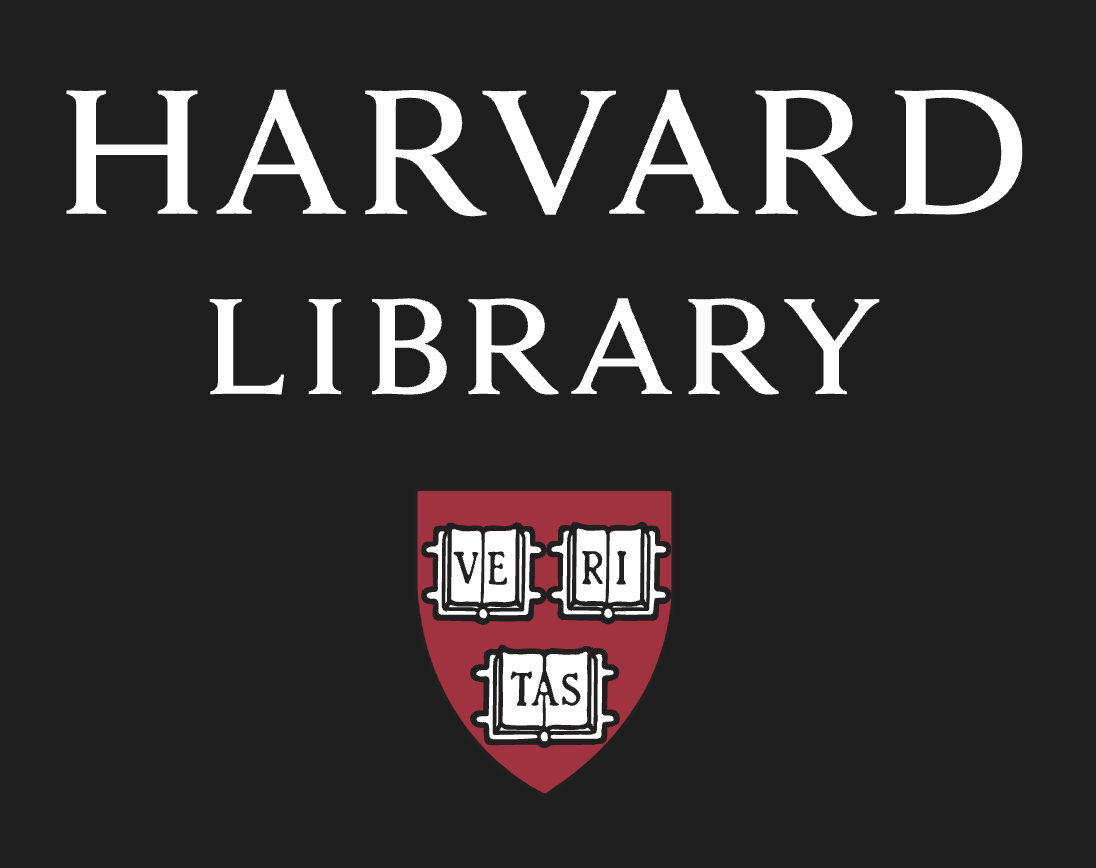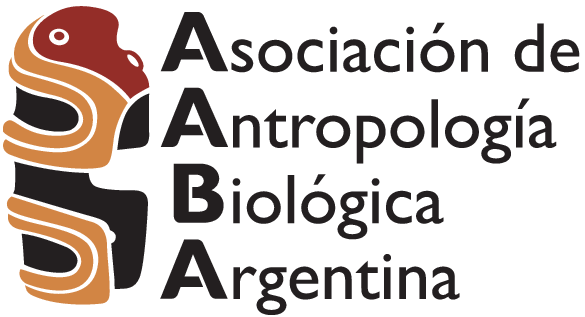Cambios morfológicos en la mandíbula durante la ontogenia: un aporte desde la Histología y la Morfometría Geométrica / Morphological changes in the human mandible during ontogeny: insights from Histological and Geometric Morphometric Analyses
Resumen
El análisis de la morfología craneofacial durante la ontogenia es una línea central en los estudios evolutivos, del desarrollo y biomédicos. El complejo craneofacial ha sido estudiado desde dos perspectivas: el análisis de la forma y el tamaño mediante morfometría lineal y geométrica, y el estudio de los procesos subyacentes mediante el análisis histológico de la superficie del hueso. El objetivo de este trabajo es integrar estas dos líneas para analizar los cambios morfológicos de la mandíbula y ofrecer un modelo de crecimiento que dé cuenta de los mismos. Se analizó una muestra de mandíbulas humanas de individuos subadultos y adultos de procedencia europea. La variación en forma fue registrada a partir de coordenadas de landmarks y análisis de regresión sobre el tamaño. Los campos de formación y reabsorción ósea fueron identificados sobre réplicas de alta resolución de la superficie ósea. Los resultados indican que la variación a escala anatómica descrita mediante técnicas morfométricas fue, en líneas generales, concordante con la inferida a partir de la distribución de las áreas de modelado óseo. Sin embargo, cambios importantes como los movimientos de rotación de la mandíbula con el crecimiento sólo pudieron detectarse a través del análisis morfométrico. Asimismo, ambos tipos de datos mostraron diferencias en las direcciones de cambio inferidas para la sínfisis mandibular. Este trabajo señala la importancia de integrar datos histológicos y morfométricos para comprender los patrones y procesos de cambio morfológico en la ontogenia.
PALABRAS CLAVE crecimiento; modelado óseo; forma y tamaño
The analysis of craniofacial morphology during ontogeny has a central role in evolutionary, developmental, and biomedical studies. The craniofacial complex has been studied from two main perspectives: the analysis of its shape and size by means of linear and geometric morphometrics, and the study of underlying processes through histological analysis of the bone surface. The aim of this work is to integrate these two lines of evidence to analyze the morphological changes of the mandible and provide a growth model that can account for such changes. We analyzed a sample of human mandibles from subadult and adult individuals of European origin. Shape changes were analyzed using landmark coordinates and regressions of shape coordinates on size. Areas of bone formation and resorption were identified on high-resolution replicas of the bone surface. The results indicate that variation at the anatomical scale, as described by morphometric techniques, is broadly consistent with that inferred from the distribution of the areas of bone modeling. However, important changes such as growth-related rotational movements of the mandible could only be detected through morphometric analysis. Also, both types of data showed differences in the directions of change inferred for the mandibular symphysis. This work highlights the importance of integrating histological and morphometric data to understand the patterns andprocesses of morphological change in ontogeny.
KEY WORDS growth; bone modeling; size and shape
Descargas
Referencias
Atchley WR, Hall BK. 1991. A model for development and evolution of complex morphological structures. Biol Rev Camb Philos Soc 66(2):101-57.
Bastir M, O’Higgins P, Rosas A. 2007. Facial ontogeny in Neanderthals and modern humans. Proc Biol Sci 274(1614):1125-1132. doi:10.1098/rspb.2006.0448
Björk A, Skieller V. 1983. Normal and abnormal growth of the mandible. A synthesis of longitudinal cephalometric implant studies over a period of 25 years. Eur J Orthod 5:1-46.
Boyde A. 1972. Scanning electron microscope studies of bone. En: Bourne GH editor. The biochemistry and physiology of bone. New York: Academic Press. p.259-310.
Brachetta Aporta N, Martinez-Maza C, Gonzalez P, Bernal V. 2014. Bone modeling patterns and morphometric creaniofacial variation in individuals from two prehistoric human populations from Argentina. Anat Rec 297:1829-1838. doi:10.1002/ar.22999
Bromage TG. 1984. Surface remodelling studies on fossil bone. J Dent Res 63:491.
Bromage TG. 1989. Ontogeny of the early human face. J Hum Evol 18:751-773.
Enlow DH. 1963. Principles of bone remodelling. Springfield: CC Thomas Publisher.
Enlow DH. 1966. A comparative study of facial growth in Homo and Macaca. Am J Phys Anthropol 24:293-308.
Enlow DH. 1982. Handbook of facial growth. Philadelphia: WB Saunders Company
Enlow DH, Hans MG. 1996. Essentials of facial growth. Philadelphia: WB Saunders Company.
Enlow DH, Harris DB. 1964. A study of postnatal growth of the human mandible. Am J Orthod 50:25-50.
Freidline SE, Martinez-Maza C, Hublin JJ. 2014. An integrative approach to studying craniofacial development in great apes and humans. Am J Phys Anthropol S58:121. doi:10.1002/ajpa.22488
Halazonetis DJ. 2007. Morphometric correlation between facial soft-tissue profile shape and skeletal pattern in children and adolescents. Am J Orthod Dentofacial 132:450-457. doi:10.1016/j.ajodo.2005.10.033
Hall BK. 2003. Unlocking the black box between genotype and phenotype: Cell condensations as morphogenetic (modular) units. Biology and Philosophy 18 (2):219-247.
Hans MG, Enlow DH, Noachtar R. 1995. Age-related differences in mandibular ramus growth: a histologic study. Angle Orthod 65:335-340.
Klingenberg CP. 2011. MorphoJ: an integrated software package for geometric morphometrics. Mol Ecol Resour 11:353-357.
Klingenberg CP. 2013. Visualizations in geometric morphometrics: how to read and how to make graphs showing shape changes. Hystrix 24:15-24.
Kurihara S, Enlow DH, Rangel RD. 1980. Remodeling reversals in anterior parts of the human mandible and maxilla. Angle Orthod 50:98-106.
Martinez-Maza C, Rosas A, Nieto-Diaz M. 2010. Identification of bone formation and resorption surfaces by reflected light microscopy. Am J Phys Anthropol 143:313-320. doi:10.1002/ajpa.21352
Martinez-Maza C, Rosas A, Nieto-Diaz M. 2013. Postnatal changes in the growth dynamics of the human face revealed from the bone modelling patterns. J Anat 223:228-241. doi:10.1111/joa.12075
McCollum MA, Ward SC. 1997. Subnasoalveolar anatomy and hominoid phylogeny: evidence from comparative ontogeny. Am J Phys Anthropol 102:377-405. doi:10.1002/(S ICI)1096-8644(199703)102:3<377::A ID - AJPA7>3.0.CO;2-S
Mitteroecker P, Gunz P, Bernhard M, Schaefer K, BooksteinFL. 2004. Comparison of cranial ontogenetic trajectories among great apes and humans. J Hum Evol 46:679–698. doi:10.1016/j.jhevol.2004.03.006
Mitteroecker P, Gunz P. 2009. Advances in Geometric Morphometrics. J Evol Biol 36:235-247. doi:10.1007/s11692-009-9055-x
Monteiro LR. 1999. Multivariate regression models and geometric morphometrics: the search for causal factors in the analysis of shape. Syst Biol 48:192-199.
Monteiro LR, Bonato V, Dos Reis SF. 2005. Evolutionary integration and morphological diversification in complex morphological structures: mandible shape divergence in spiny rats (Rodentia, Echimyidae). Evol Dev 7 (5):429-439. doi:10.1111/j.1525-142X.2005.05047.x
Moss ML. 1962. The functional matrix. En: Kraus BS, Riedel RA editores. Vistas in Orthodontics. Philadelphia: Lea and Febiger. p. 85-98.
Moss ML. 1970. Enamel and bone in shark teeth: with a note on fibrous enamel in fishes. Acta Anat 77:161-187.
Moss ML. 1997a. The functional matrix hypothesis revisited. 1. The role of mechanotransduction. Am J Orthod Dentofacial Orthop 112:8-11.
Moss ML. 1997b. The functional matrix hypothesis revisited. 2. The role of an osseus connected cellular network. Am J Orthod Dentofacial Orthop 112:221-226.
Moss ML. 1997c. The functional matrix hypothesis revisited. 3. The genomic thesis. Am J Orthod Dentofacial Orthop 112:338-342.
Moss ML. 1997d. The functional matrix hypothesis revisited. 4. The epigenetic antithesis and the resolving synthesis. Am J Orthod Dentofacial Orthop 112:410-417.
Moss ML, Salentijn L. 1970. The logarithmic growth of the human mandible. Acta Anat 77:341-360.
O´Higgins P, Jones N. 1998. Facial growth in Cercocebus torquatus: an application of three-dimensional geometric morphometric techniques to the study of morphological variation. J Anat 193 (2):251-272. doi:10.1046/j.1469-7580.1998.19320251.x
R Core Team. 2014. R: A language and environment for statistical computing. R Foundation for Statistical Computing, Vienna, Austria. URL http://www.R-project.org/
Rocha MA. 1995. Les collections ostéologiques humaines identifiées du Musee Anthropologique de l’Université de Coimbra. Antropologia Portuguesa 13:7-39.
Rohlf FJ, Slice DE. 1990. Extensions of the procrustes method for the optimal superimposition of landmarks. Syst Zool 39:40-59. doi:10.2307/2992207
Wiley DF, Amenta N, Alcantara DA Ghosh D, Kil YJ, Delson E, Harcourt-Smith W, Rohlf FJ, St John K, Hamann B. 2005. Evolutionary morphing. En: Silva CT, Groeller E, Rushmeier HE, editores. IEEE Visualization 2005, IEEE Los Alamitos, California: Computer Society Press. p 431-438.
Wilson LAB, Ives R, Cardoso HFV, Humphrey LT. 2015. Shape, size, and maturity trajectories of the human ilium. Am J Phys Anthropol 156:19-34. doi:10.1002/ajpa.22625
Descargas
Archivos adicionales
Publicado
Número
Sección
Licencia
La RAAB es una revista de acceso abierto tipo diamante. No se aplican cargos para la lectura, el envío de los trabajos ni tampoco para su procesamiento. Asímismo, los autores mantienen el copyright sobre sus trabajos así como también los derechos de publicación sin restricciones.






























